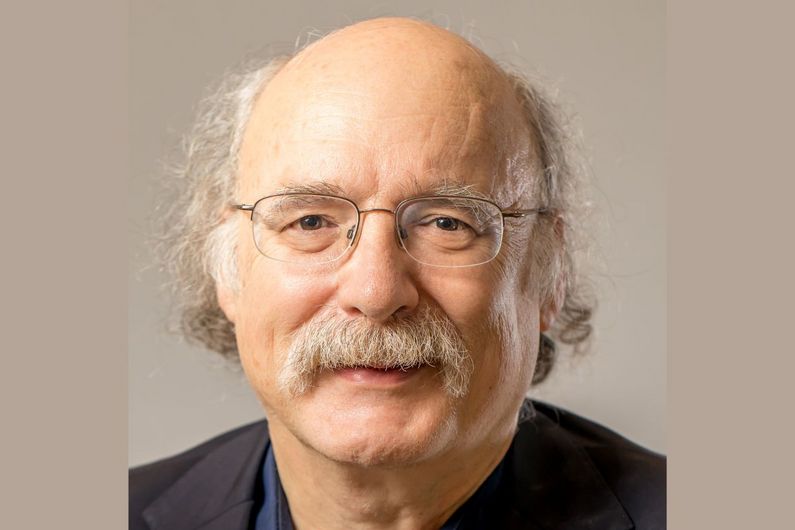A Nobel in physics visits UdeM
- Salle de presse
08/25/2022
- UdeMNouvelles
British scientist Duncan Haldane, co-recipient of a Nobel prize in physics in 2016, is here for an international conference on conformal field theories and quantum ‘many-body" physics.
This week through Sept. 9, Université de Montréal’s Centre de recherches mathémathiques is hosting an international conference on the highly specialized subjects of conformal field theories (CFTs) and quantum “many-body” physics – and one of its keynote speakers is a Nobel Prize-winning physicist.
Duncan Haldane, who was awarded the Nobel in 2016 along with two others, is the Sherman Fairchild Professor of Physics at Princeton University, in New Jersey. British-born and -educated, Haldane gave an hour-long lecture Tuesday afternoon, another Wednesday and will give a third tomorrow.
CFTs play a key role in physics and mathematical physics due to the deep consequences of what’s known as conformal algebra. They’ve been studied in two spacetime dimensions and beyond by physicists specializing in subjects as diverse as condensed matter, algebra, quantum field theory, string theory and quantum information.
We asked Professor Haldane to briefly discuss his subject.
Your lecture Tuesday was titled “Topological quantum matter, entanglement, and the second quantum revolution.” For ordinary mortals, what does that mean?
The laws of quantum mechanics aren’t new: they’ve remained unchanged and have passed all tests for the last 85 years. But new discoveries about the exotic states that they allow, as well as ideas of “entanglement”and others from quantum information theory have greatly changed our perspective. Some believe that a “second quantum revolution” is currently underway. The discovery of unexpected “topological states of matter”, and their possible use for topologically-protected quantum information processing is one of the important themes of these developments.
Tomorrow you narrow in on a more specialized subject: the effects of “quantum geometry in the fractional quantum hall,” as you call it. What’s that all about?
The fractional quantum hall fluids are remarkable quantum systems in which electrons form a quantum liquid that is incompressible – it resists squeezing – and has “topological order.” Some of these fluids are believed, in principle, to allow quantum information to be stored and processed while remaining hidden from local noise and disturbances that could cause “decoherence,” the big problem in implementing quantum computers. These fluids are made of “elementary units” of electric charge combined with magnetic fields. The “quantum geometry” I am talking about is involves the quantum fluctuations of the shape of these elementary units. There are some intriguing analogies with what our colleagues in quantum gravity theory are thinking about when they try to understand quantum fluctuations of the fabric of space-time.
You’ve had a chance to see UdeM up-close all week. Any insights?
I’ve been meeting with colleagues at the Centre de recherches mathémathiques who are working at the boundary of mathematics and physics. The two fields benefit from cross-fertilization of ideas and ways of thinking, especially in areas such as algebras and geometry. So it’s been a very stimulating week!
Media contact
-
Jeff Heinrich
Université de Montréal
Tel: 514 343-7593












